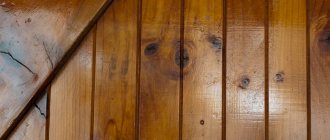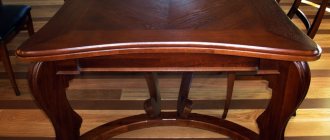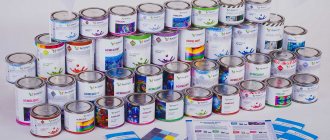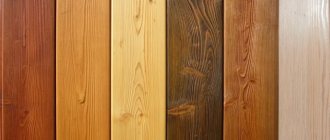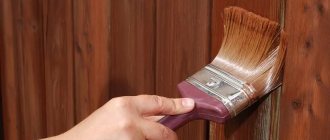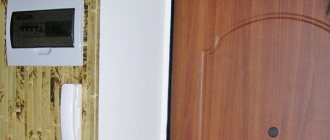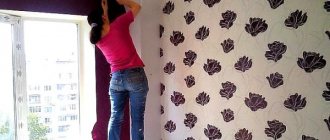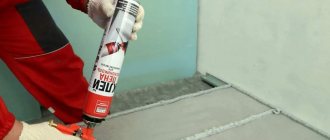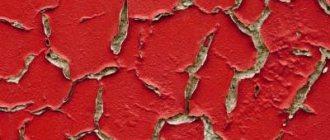Varnishing of MDF panels is required in different situations. For example, when it is necessary to protect the structure from high humidity or mechanical damage. Products are also varnished to make them visually attractive and decorative, for example, furniture or doors. Many people ask questions: how to choose and use varnish for MDF products, how to apply varnish correctly, and what are the benefits of varnishing MDF? All these issues will be discussed in this article.
What are MDF panels and what are they used for?
MDF boards are made from wood fibers. This is an environmentally friendly and clean material that does not harm human health. MDF panels have a medium density and have the following characteristics:
- are characterized by a high level of moisture resistance, this material does not deteriorate in conditions of high air humidity;
- have high resistance to the effects of elevated temperatures;
- have good strength;
- are inexpensive. Boards of this material have a much lower cost than natural wood;
- resistant to mold, fungi, and all kinds of microorganisms;
- do not require special care;
- structures and products of any shape and size can be manufactured;
- Special enamels, paints and varnishes fit well on MDF panels.
Most often, panels of this material are used in the production of furniture and sets. Furniture facades, commercial equipment, office and home tables, cabinets, and doors are made from MDF. These boards are used to create acoustic systems, kitchen countertops, facades, and other products.
Paints that can be used
To paint MDF boards yourself, it is best to take enamels, since they form a durable opaque film and come in glossy and matte finishes. The following materials can be used:
- alkyd, alkyd-urethane or oil-based enamels;
- based on polyurethane resins;
- acrylic enamels;
- nitro paints of the NTs series;
- professional two-component polyurethane enamels;
- specialized enamels for MDF;
- automotive enamels.
Each of these materials has its own characteristics. But perhaps the last two items on the list have the best properties.
It is especially worth noting that in industrial conditions today powder coating of MDF facades is often used. This method is extremely economical and makes it possible to achieve high mechanical and chemical costs. The method is based on the ability of unlike charges to attract each other. It was originally used for ceramics, metals and other materials that can withstand high temperatures.
It is now almost impossible to paint MDF facades using a powder method in standard home conditions. This type of painting requires special, expensive equipment that can only pay for itself with constant, frequent use, and it’s unlikely to be placed at home.
Advantages of varnishing
Many people do not know that coating MDF panels with varnish provides many important advantages, here are just a few of them:
- Furniture coated with varnish becomes resistant to high ambient temperatures or hot objects. For example, if an MDF table is varnished, then you can safely place hot pans or pots on it;
- Using varnishing you can decorate the surface. Today, glossy, pearlescent, matte, silky varieties of varnishes are produced that decorate products, making them unique and exclusive. Such effects can be used for both external and internal finishing of MDF boards;
- high-quality varnish for covering MDF will not make this material less environmentally friendly and safe;
- Thanks to the application of a layer of varnish, the surface will acquire maximum moisture resistance and will not swell or deform;
- varnishing significantly extends the service life of furniture sets or doors.
Fungi or mold will never settle on the varnished surface; the base will be reliably protected by a dense, strong film. The varnished layer is easy to wash or clean, it does not wear off, and protects the surface of the material from damage. Doors or furniture retain their original, attractive appearance for a long time. By applying varnish you can highlight the texture of the material, and by applying a tinted composition you can easily change the appearance of MDF.
There are several disadvantages to using varnish on MDF - such a coating or varnished surface is more expensive than a regular board. Varnish solutions with organic solvents are fire hazardous, and water-based varnish mixtures take a long time to dry.
Dyeing technology
The final result of processing MDF depends on whether the sequence of actions was followed when applying the composition. Main stages:
- putty;
- primer;
- direct painting with varnish;
- drying.
First, the room and surfaces to be treated are prepared. Floors, walls and pieces of furniture located next to the surface to be treated are protected from varnish splashes. It will be difficult to remove such defects in the future. If you use a solvent for this, you can damage the furniture or the lining of the floor or supporting structures.
Pay attention to: Varnish for pine stairs: properties and application technology
At the next stage, the surface that will be varnished is sanded. For this purpose, abrasive means for mechanical grinding or electrical equipment are used to speed up the process. The MDF surface is smooth. If you apply finishing material to an unprepared slab, the service life of the decorative coating will be reduced. To prolong it, abrasive agents are used.
In this case, they are not used to increase the smoothness of the surface, but, on the contrary, make it rough. The risks are small in size, so they do not degrade the appearance of the product.
Grinding
The following agents help increase adhesion:
- sandpaper, used for dry sanding;
- scotch-brite;
- Grinder.
Small panels are treated with sandpaper or Scotch Brite. The first of the products differs in the degree of granularity. Large surfaces are sanded with 700 series mats, which are characterized by fine-grained abrasives. To process compact MDF products, use sandpaper P220-P280.
The grinder operates quickly and more efficiently, while the work takes a minimum amount of time. Scotch Brite is an abrasive material, it is non-woven, and its properties resemble felt.
putty
After grinding, the surface is degreased; for this purpose, Antisilicone is often used. Large defects are eliminated with putty. Such compositions allow you to remove cracks, leaks, and dents. After the marks have formed, the putty will adhere well to the smooth MDF surface.
Antisilicone is used after puttying.
Considering that this material contains wood chips, it is recommended to use only a special composition. A suitable option is acrylic putty for wood. A rubber spatula is used for application.
Primer
For MDF chipboards, a polyurethane composition is considered the most suitable option. It is distinguished from analogues by a significant proportion of resins. As a result, the likelihood of shrinkage of the material layer is reduced.
If you plan to use glossy varnish in the future, it is recommended to choose a polyester primer; it hides minor surface defects better. One layer is enough. If necessary, the next layer is applied when the previous one has dried. Then they move on to the next stage.
Painting
Recommended environmental parameters:
- air humidity – no higher than 80%;
- temperature – up to +20°С.
Please note: Reasons for applying varnish to acrylic paint
Varnishing is done with a spray gun, brush or roller. The solution, like the primer, is mixed with a hardener or thinner. The ratio of components varies depending on what composition is used:
- matte varnish: 100 parts by weight of enamel, 50 parts of hardener, 30 parts of thinner;
- glossy: only the amount of hardener changes - 70 parts.
The recommended consumption of such material is 150 g/m². The composition will harden after 1 day, the polymerization process will be completely completed after 3 days.
Wet technology
In this case, liquid formulations are used. They are applied using a spray gun, the varnish comes out of a minimal hole under pressure. This results in the formation of small droplets. As a result, the surface is covered with a uniform layer. The likelihood of smudges is low, since the maximum layer thickness is 120 microns. When using this method, defects become more pronounced, especially if small debris remains on the surface.
Application of wet technology.
Powder technology
This coloring method is not used in everyday life, since special equipment is required. It is based on a dry powder composition. It is applied under pressure using a spray gun, then the particles need to be melted. To do this, the product is exposed to high temperatures.
The strength of the coating will be the highest, since the particles penetrate into the structure of the material under the influence of pressure. It is difficult to remove such a layer of paint.
What varnish should be used for MDF boards
To process this material, you need to use a special type of varnish. It creates a smooth protective layer on the surface that is highly resistant to chemicals and mechanical stress. The varnish for MDF panels is either matte or glossy. The glossy solution is obtained as a result of the use of special synthetic resins. And the matte mixture most often consists of water-based acrylic components.
Important! Typically, the varnish for coating MDF panels is a two-component solution, that is, the composition is in two different containers - in one of them there is varnish, and in the other there is a special hardener. Before using this varnish, you need to mix both components in the proportion specified in the instructions. Most often, the solution is produced odorless.
After mixing the two components of the varnish, the resulting mixture must be applied within 2-3 hours; later the solution will become unusable. You can apply the varnish using a spray bottle, roller or brush.
When choosing a varnish solution for panels, you must consider the following characteristics:
- The drying period of the varnished layer should not be longer than 72 hours;
- the drying period from dust should not exceed 15 minutes;
- the temperature at which the composition can be applied should be from 5 to 25 degrees;
- varnish consumption per square meter for single-layer application should not exceed 500 grams;
- the volume of the mixture of volatile components should be less than 20%.
Primer coating
Before painting, it is highly advisable to treat MDF with a primer. This processing is carried out in two passes. At the first stage, the insulating soil is sprayed using a spray gun at the rate of 90-100 grams per square meter.
Note! If you intend to paint laminated MDF board (LMDF), then you can do without priming and immediately move on to the next step.
The primer should prevent new paint or varnish from being absorbed into the MDF board. The soil gets into all loose areas of the MDF, which means that the paint will not sag in the future. After the primer has dried, the surface is carefully sanded with sandpaper or sandpaper.
To form the second layer, it is best to use white polyurethane primer. Here the consumption should be 150 grams per square meter. And this layer of soil must be given a certain time to dry - up to 24 hours.
If we talk about general recommendations for priming MDF, it is carried out with a spray gun. If you don’t have a spray gun, then you can use a brush. First, the most complex elements of the cutters are processed, then the edge and the rest of the surface. For the first time, the part is coated lengthwise, and the second layer is made across the direction of the strokes of the first.
Necessary tools for varnishing
Before you start varnishing, you need to prepare the following set of tools and materials:
- two brushes. One brush should be narrow, it will be used for processing small parts, and it is better to purchase a second brush of medium size, to cover the remaining parts of the structure. Instead of brushes, you can use a roller or spray gun;
- a container in which the components of the varnish solution will be mixed;
- construction mixer or drill with an attachment;
- container into which the solution will be poured;
- if any ornament is to be applied, you will need a sponge, a stencil and masking tape;
- several sandpapers of different grits;
- latex gloves;
- suitable solvent for diluting the varnish mixture.
All nearby objects and surfaces must be protected with cardboard or cellophane film to prevent varnish from getting on them. After drying, varnish drops and splashes are quite difficult to remove.
Applying paint
After priming, it’s time to directly apply paint. Here, in principle, there is nothing complicated. First, prepare the dye according to the manufacturer's instructions. Then take the spray gun and adjust it so that its coverage area is small. This allows you to use material economically and paint as thoroughly as possible.
Painting MDF facades or other products made from this material begins with the most problematic (for example, covered with cracks and scratches) areas. And only after that the rest of the area is painted over. To achieve the best result, it is worth applying several layers. Moreover, after each layer it is necessary to take a break from twenty minutes to several hours to dry.
If you have no experience working with a spray gun, then you should first conduct training on some unnecessary piece of wood. Of course, you can use a roller or brush, but in this case there is a risk that the surface will not be perfectly smooth and even.
Varnishing rules
Before starting varnishing, it is advisable to prime the surface. Thanks to the primer, the surface will be as clean as possible from fine dust, and the consumption of varnish solution will also be reduced. In addition, priming enhances adhesion, that is, an indicator of the adhesion of the varnish mixture to the surface, and the composition will lay down in an even layer. The primer will fill all pores and cracks and strengthen the surface. After priming, you must perform the following steps:
- using putty to fill chips, scratches and cracks;
- after the putty has dried, the surface is treated with sandpaper;
- the material is primed again;
- Using a small brush, the varnish composition is applied to the ends of the slabs, patterns, design lines, and other inconvenient details;
- using a spray gun, roller or wide brush, the main surface is varnished;
- After the first layer has dried, a second varnish coating is applied (if necessary).
Important nuances
Experts do not recommend varnishing an unprepared surface; first you need to prime, sand, and, if necessary, putty the material, only then apply the varnish composition. If a two-component mixture is used, then after mixing both components, it is advisable to filter the solution and apply it within 2-3 hours.
If the composition is applied from a spray bottle, it is important to monitor the pressure, which should not exceed 3 atmospheres, and the nozzle diameter should not be more than 2 millimeters. When varnishing in several layers, each layer must be dried at a temperature of 25 to 35 degrees; usually the mixture dries in 5-6 hours.
So, thanks to varnishing MDF panels, you can strengthen this material and extend its service life. In addition, the varnish is applied as a decorative layer to give the surface, for example, a glossy or matte shine, or paint it in the desired shade.
Varnishing
After painting, in most cases it is also necessary to varnish the product. The first layer of varnish, prepared for use, is applied at the same rate as primer (150 g per 1 sq. m).
The second layer is applied after the first layer has completely dried. Then, when this paint dries, you need to sand the MDF panel again. First, coarse-grain sandpaper is passed over its surface, and then fine-grained sandpaper is used. To prevent lumps from rolling off, the treated area is periodically moistened with water.
Another week after this, the MDF must be additionally polished with a sander and abrasive paste. This is the most correct technology, although at home, when working with your own hands, it is sometimes not followed, limiting yourself to ordinary varnishing.
